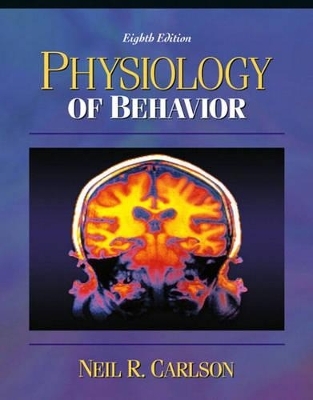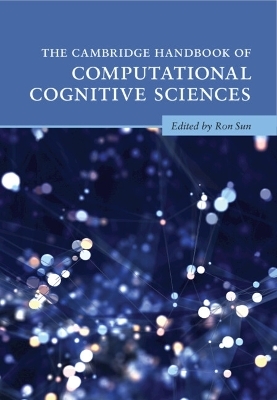
Physiology of Behavior, with Neuroscience Animations and Student Study Guide CD-ROM
Pearson
978-0-205-40369-1 (ISBN)
- Titel erscheint in neuer Auflage
- Artikel merken
The Eighth Edition of Physiology of Behavior continues its tradition as the most comprehensive, current, and teachable text for physiological psychology.
This classic text incorporates the latest discoveries in the rapidly changing fields of neuroscience and physiological psychology and offers the most comprehensive and integrative coverage of research and theory in contemporary behavioral neuroscience.
Thoughtfully organized, it offers scholarly, yet accessible coverage and effectively emphasizes the dynamic interaction between biology and behavior. Collaboration with a talented artist has provided beautiful, accurate, and informative full-color illustrations that further enhance the appeal to both students and professors alike.
1. Introduction.
Understanding Human Consciousness: A Physiological Approach.
The Nature of Physiological Psychology.
Natural Selection and Evolution.
Ethical Issues in Research with Animals.
Careers in Neuroscience.
Strategies for Learning.
2. Structure and Functions of Cells of the Nervous System.
Cells of the Nervous System.
Communication Within a Neuron.
Communication Between Neurons.
3. Structure of the Nervous System.
Basic Features of the Nervous System.
The Central Nervous System.
The Peripheral Nervous System.
4. Psychopharmacology.
Principles of Psychopharmacology.
Sites of Drug Action.
Neurotransmitters and Neuromodulators.
5. Methods and Strategies of Research.
Experimental Ablation.
Recording and Stimulating Neural Activity.
Neurochemical Methods.
Genetic Methods.
6. Vision.
The Stimulus.
Anatomy of the Visual System.
Coding of Visual Information in the Retina.
Analysis of Visual Information: Role of the Striate Cortex.
Analysis of Visual Information: Role of the Visual Association Cortex.
7. Audition, The Body Senses, and the Chemical Senses.
Audition.
Vestibular System.
Somatosenses.
Gustation.
Olfaction.
8. Control of Movement.
Muscles.
Reflex Control of Movement.
Control of Movement by the Brain.
9. Sleep and Biological Rhythms.
A Physiological and Behavioral Description.
Disorders of Sleep.
Why Do We Sleep?
Physiological Mechanisms of Sleep and Waking.
Biological Clocks.
10. Reproductive Behavior.
Sexual Development.@AHEADS = Hormonal Control of Sexual Behavior.
Neural Control of Sexual Behavior.
Parental Behavior.
11. Emotion.
Emotions as Response Patterns.
Communication of Emotions.@AHEADS = Feelings of Emotions.
12. Ingestive Behavior.
Physiological Regulatory Mechanisms.
Drinking.
Eating: Some Facts About Metabolism.
What Starts a Meal?
What Stops a Meal?
Brain Mechanisms.
Eating Disorders.
13. Learning and Memory: Basic Mechanisms.
The Nature of Learning.
Learning and Synaptic Plasticity.
Perceptual Learning.
Classical Conditioning.
Instrumental Conditioning and Motor Learning.
14. Relational Learning and Amnesia.
Human Anterograde Amnesia.
Relational Learning in Laboratory Animals.
15. Human Communication.
Speech Production and Comprehension: Brain Mechanisms.
Disorders of Reading and Writing.
16. Schizophrenia and the Affective Disorders.
Schizophrenia.
Major Affective Disorders.
17. Anxiety Disorders, Autistic Disorder, and Stress Disorders.
Anxiety Disorders.
Autistic Disorder.
Attention-Deficit/Hyperactivity Disorder.
Stress Disorders.
18. Drug Abuse.
Common Features of Addiction.
Commonly Abused Drugs.
Heredity and Drug Abuse.
Therapy for Drug Abuse.
| Erscheint lt. Verlag | 7.8.2003 |
|---|---|
| Sprache | englisch |
| Maße | 216 x 277 mm |
| Gewicht | 1480 g |
| Themenwelt | Geisteswissenschaften ► Psychologie ► Verhaltenstherapie |
| Medizin / Pharmazie ► Medizinische Fachgebiete ► Neurologie | |
| ISBN-10 | 0-205-40369-7 / 0205403697 |
| ISBN-13 | 978-0-205-40369-1 / 9780205403691 |
| Zustand | Neuware |
| Haben Sie eine Frage zum Produkt? |
aus dem Bereich
